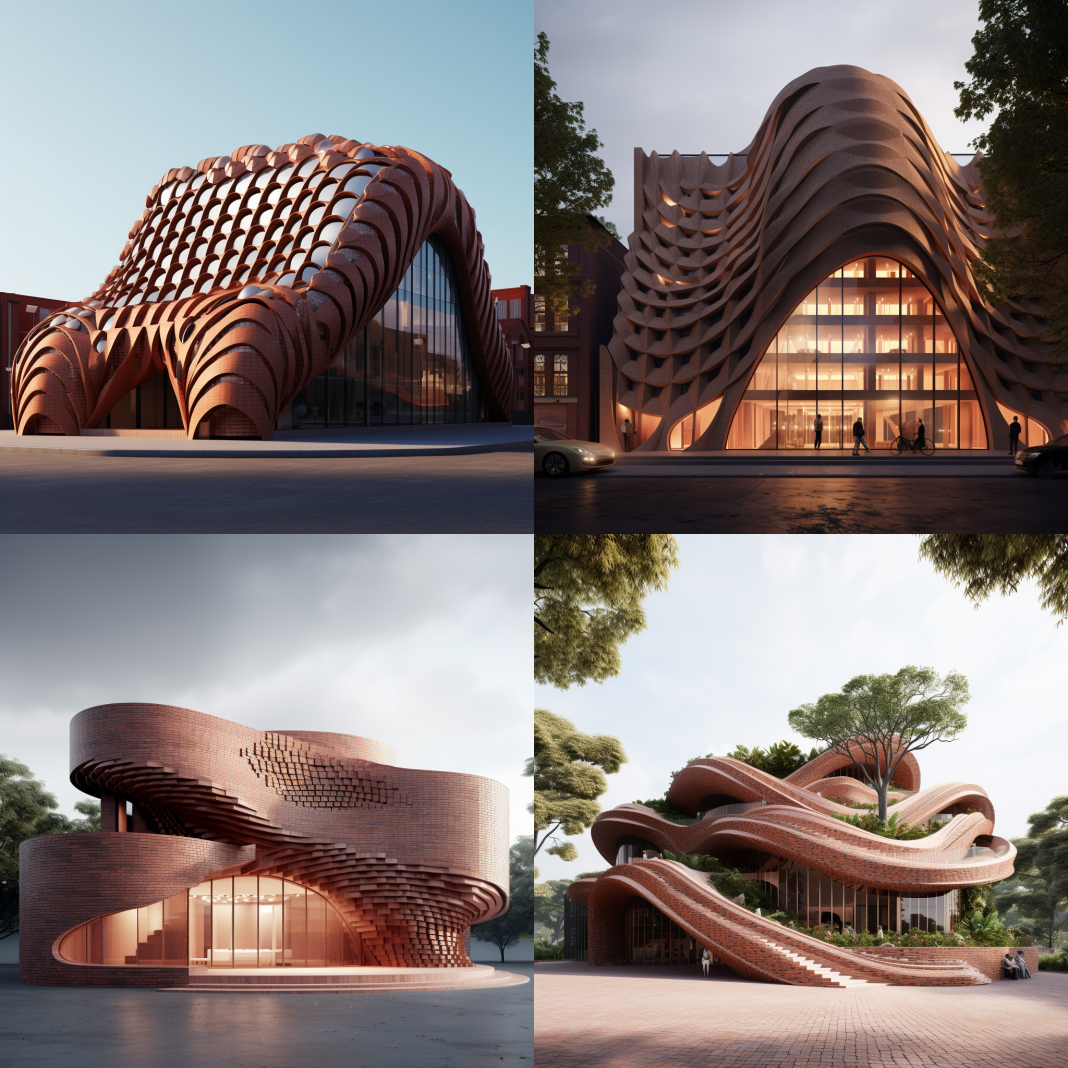Michael Schroeder of SGA explores how architects can usher in a new age for the built environment by leveraging AI as a resource.
Artificial Intelligence (AI) continues to prove itself as a transformative force across markets and industries. It is clear that AI is no longer simply a buzzword, but a catalyst that is actively transforming professional practice as we know it. These systems will only further reshape the way we approach our work as architects and designers.
In fact, integrating AI into the architectural workplace has already unveiled an arsenal of tools to augment and expedite processes. By harnessing this technology, architects and designers are opening up more time to focus on ideation and innovation. The boundaries of AI’s impact on the A/E/C industry are near limitless, and our team is consistently seeking out cutting-edge opportunities for its practical use.
How Are Architects Using AI in the Workplace?
AI has quickly become a powerful communication tool for architects. Workflow communication and consensus-building within teams have gained new dimensions through AI-driven platforms. For example, tools like ChatGPT and Tactiq not only allow architects to generate meeting minutes, but can assist with drafting neighborhood notices, memos, and more when given the appropriate constraints and prompts. AI can even be trained to write in an individual’s distinct style and tone; leveraging a greater threshold of tasks AI can enhance. With less time spent on drafting, teams can execute administrative tasks more efficiently.
As these technologies are early-stage, the work products they produce must be actively reviewed by a licensed architect before they can be considered final.
Right now, AI is gaining a lot of attention in certain edges of the field, like code research. These commercially available programs are good. They reference exclusive databases populated with the most up-to-date codes. While these tools can be powerful, further development and fine-tuning is needed. We must continue to train up these models so that they better understand the underlying structure of the building codes they reference.
This particular use case is a lot different and not as loose as the more prose-like LLMs (Large Language Models) like ChatGPT was built on. It is more of a hybrid; right in between regular language and legal language. Because you have to be very specific–and there are mathematical rules to follow–these programs must develop a deeper understanding of code structures before they can provide a truly turnkey analysis.
At this stage, these technologies are a great copilot in code compliance. They can be used to cast a broad net, capturing potentially applicable code requirements in relevant municipalities and scenarios. However, their output requires an informed architect to validate the data before it is applied. As discussed, all technology comes with its own set of challenges. For one, AI’s ability to interpret building codes is an area that will require more development. While there are promising AI models, such as UpCode, in the works, this critical, complex task requires precision, accuracy and knowledge of a particular location or jurisdiction, and is best used as a tool with architects & designers overseeing it to ensure the utmost accuracy.

Architectural Applications on the Immediate Horizon
We are currently engaged in training LLMs to learn the information structures to identify specific details and elements from our firm’s Building Information Modeling (BIM) Library. With this specific focus, AI could subsequently establish relationships between building components; developing relative families associated with your search. What we are doing now is a sort of ‘fine-tuning’ to an existing LLM model.
We are feeding these systems our own data. In the way that ChatGPT was built and trained, we are able to provide data sets that this customized model can pull from. This would allow the model to respond to a BIM/Revit related prompt.
This work in the back end reads and structures BIM elements into a special type of database called the vector database. Then, that information is directly referenced by these LLMs. What we’re doing is mapping our knowledge into an AI kind of ‘brain.’
All of these BIM/Revit components are already categorized. When the architectural profession moved from drawing with pencil and paper into this digital model based approach–which is much closer to reality–we developed components that are not generic. They reference actual furniture systems and components. Within these, we have specific parameters that could be further explored: finish, material, size, shape, etc.
A natural extension to this BIM/Revit training would be for these AI systems to evaluate an available floor plan, reference data we provide about a client’s desired programming, and then provide a series of potential test fits and floor plans filled with all of the appropriate furniture, fixtures, and equipment. From there, in the ways that we prompt ChatGPT to alter the tone of our writing, we could ask it to update color palettes from natural to bold; or to change styles from modern to traditional.

Optimizing Creative Communication
New generative design tools, such as Midjourney (which we are finding to be the most solid at image generations thus far), have also enabled AI to become a supportive partner in the creative process. Prompting these tools to quickly render a vast array of design schemes can offer clients a higher level of insight into the process, and quicken decision making processes. We are even implementing AI tools that turn hand sketches into highly-realistic renderings. With an adept architect in the driver’s seat, designers are able to more efficiently and effectively communicate artistic expressions and ideas to a variety of audiences.
Streamlining Collaboration & Management
The essence of success lies in collaboration between architects, engineers, clients, and all of a project’s various stakeholders. In this regard, technology continues to be a harmonizing force, especially when it comes to the construction phase of projects. By fusing technology and architecture together, firms will be more equipped to create integrated tools that enhance predictability, mitigate risk, and promote cost efficiency, as the SGA Dashboard does for example. We are currently exploring ways to enhance this proprietary dashboard in the future. One method could be Implementing AI as an omniscient resource; monitoring and analyzing all of a project team’s touchpoints and correspondence to ensure each relevant party is consistently presented with the most up-to-date information relevant to their tasks and trade.

Embracing an AI-Powered Future
From streamlining programming and design iterations to strengthening communication, managing construction phases, and enhancing performance, there is no doubt that AI is enabling architects to work more efficiently, creatively, and strategically. As architects and designers march toward an AI-powered future, the keys to success lie in embracing AI as a catalyst–not a replacement–for human ingenuity. Inspiring innovation, and empowering execution. By leveraging AI as a resource, and tapping into its analytical abilities, architects can focus on what truly matters–envisioning spaces that resonate with the human experience and ushering in a new age for the built environment.


